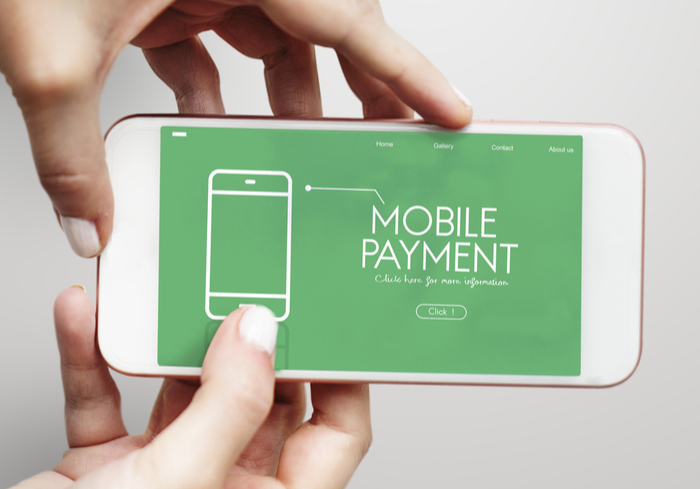Gig Workers And Instant Pay

Workers in the gig economy don’t always get paid as quickly as they’d like. Drivers for Uber, for example, have their payments calculated on a weekly basis that begins and ends each Monday at 4:00 A.M. Lyft, too, calculates driver payments on a weekly basis.
If a driver takes a fare after the cut-off time on either platform? Well, that payment is calculated for the next week — unless drivers take advantage of special programs.
To help expedite the payment process, Uber does have Instant Pay, which allows riders to cash out their earnings up to five times each day — with a $1 minimum. Lyft, too, has a similar feature called Express Pay, which allows drivers to transfer their earnings to a debit card after reaching $50 in ride earnings, referrals and mentor payments — and pay a $0.50 transfer fee.
These companies — along with platforms like Fiverr and Postmates — are changing the model for American workers, providing individuals with far greater flexibility and the freedom to be their own bosses. In 2016 alone, 34 percent of the American workforce was made up of freelancers — a number projected to grow to 43 percent by 2020, according to PYMNTS’s Gig Economy Index. And, yes, of course, they all have to somehow get paid.
Yet this economy is facing some growing pains, especially in payments. Even though gig workers want faster payments, they’re not always getting them. In 2017, 63 percent of gig employees were paid within a week of service in the third quarter of 2017. That number has dropped to 51 percent in the fourth quarter of 2017, indicating payments are coming in even later than before. So, when considering payments to gig workers, here are five things to keep in mind.
—35 percent of gig employees are receiving payments through PayPal. Fiverr, for example, allows its gig workers to get paid through this popular payment processor. There is a waiting period for withdrawals, however. Most sellers can get paid 14 days after their gig order is marked as completed. But “top rated sellers,” according to the company, have their payments arrive in their accounts at a significantly faster clip — only seven days. Other gig economy-based companies offer PayPal, too, such as GigSalad, which allows users that have a PayPal account to be paid through their platform.
—The majority of gig workers — 54 percent — are paid by direct deposit. Paper checks can cost money for employers to issue and track. They also are not convenient for employees, who may have to go to the bank if they are not using services like mobile check deposit. And, for the benefit of employers, they can be remotely processed. Direct deposits, of course, avoid another potentially pitfall: lost or stolen checks.
—Gig employees who work in industries requiring fewer qualifications tend to be paid in cash. In the U.K., jobs such as window cleaning and decorating are often paid in cash. The obvious downside is that governments may not get the tax revenue if the cash income is not reported. A former aide to Tony Blair said in a report that he didn’t want to ban payments by cash, but he hoped to see more workers get paid by PayPal or WorldPay. “In a few years’ time, as we move to a more cashless economy, self-employed people would be paid cashlessly — like your window cleaner. At the same time, they can pay taxes and save for their pension,” he told the BBC.
—Gig employees working in the transportation industry have the highest proportion of employees being paid directly by gig entities at 47 percent of workers. Uber, for example, pays its gig workers by direct deposits on Thursdays. Workers are only paid for their time and tolls, as Uber automatically takes a cut from rides on the platform to cover support, credit card processing fees and marketing. Lyft, too, pays its drivers directly after taking out charges from a rider’s fare, like a service fee, and sends payments to its drivers on Tuesdays starting around 5:00 A.M.
—An overwhelming majority of gig workers — 84 percent — reported they would do more gig work if they were paid faster. Gig platforms need to attract workers to make sure they can fill customers’ orders and requests while growing their platform. If platforms don’t pay their workers quickly enough, their workers might choose to offer their services on another site. Michael Ting, Hyperwallet’s SVP of Digital Markets, said, “Most of these [workers] come onto these [gig] platforms for a single purpose, and that’s really to make money. They’re naturally going to gravitate toward the one — and promote the one — that gets them paid most easily and most conveniently.”
Beyond direct deposit and cashless payments, the blockchain may provide the future for less expensive and faster gig payments. Forbes estimates that remittance fees for traditional transactions can be up to 20 percent, for example, while cryptocurrency fees range from 0.05 – 0.25 percent. So, someday in the near future, perhaps your Uber or Lyft driver will be paid with bitcoin or Ripple — instead of U.S. dollars.